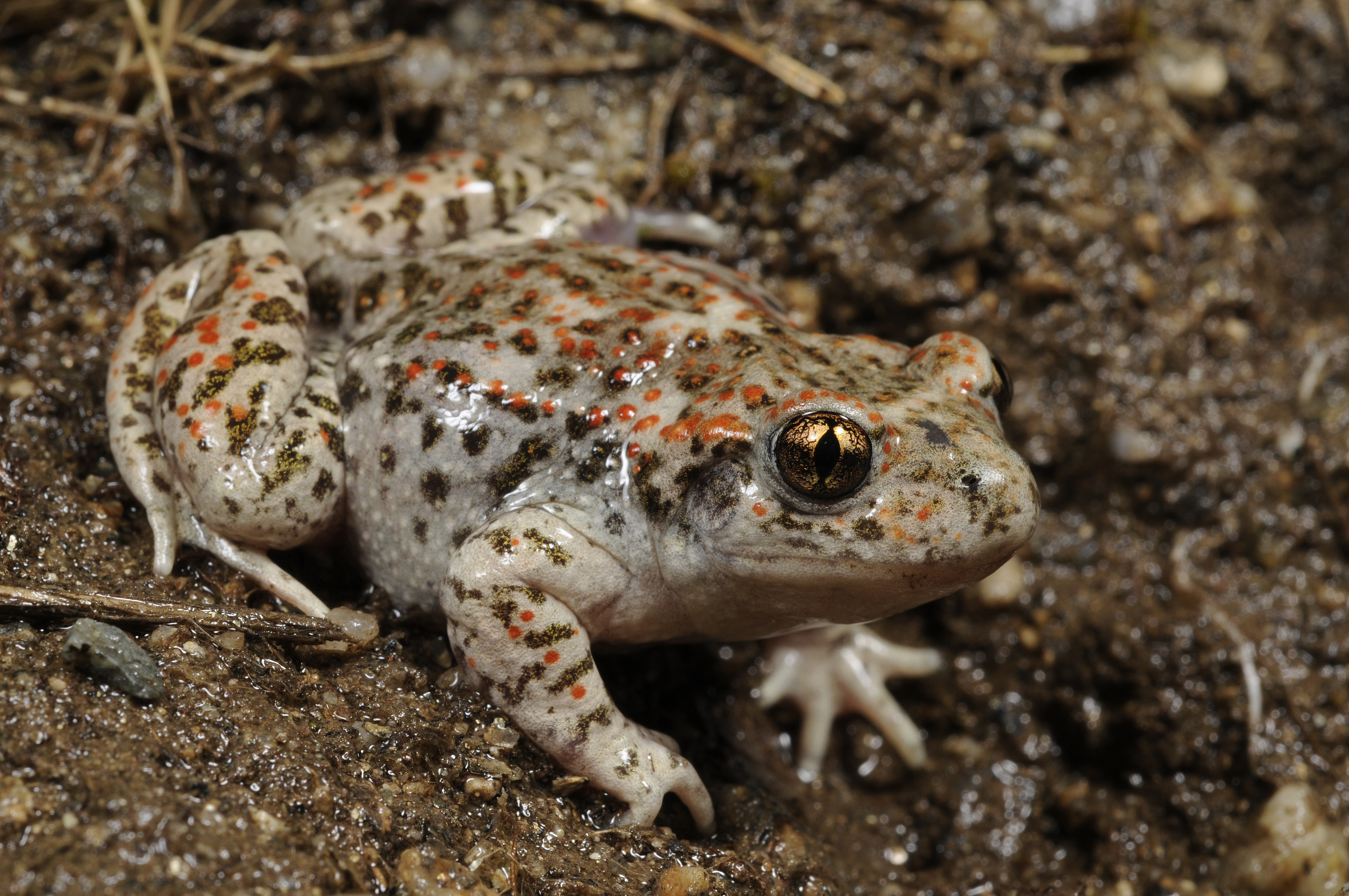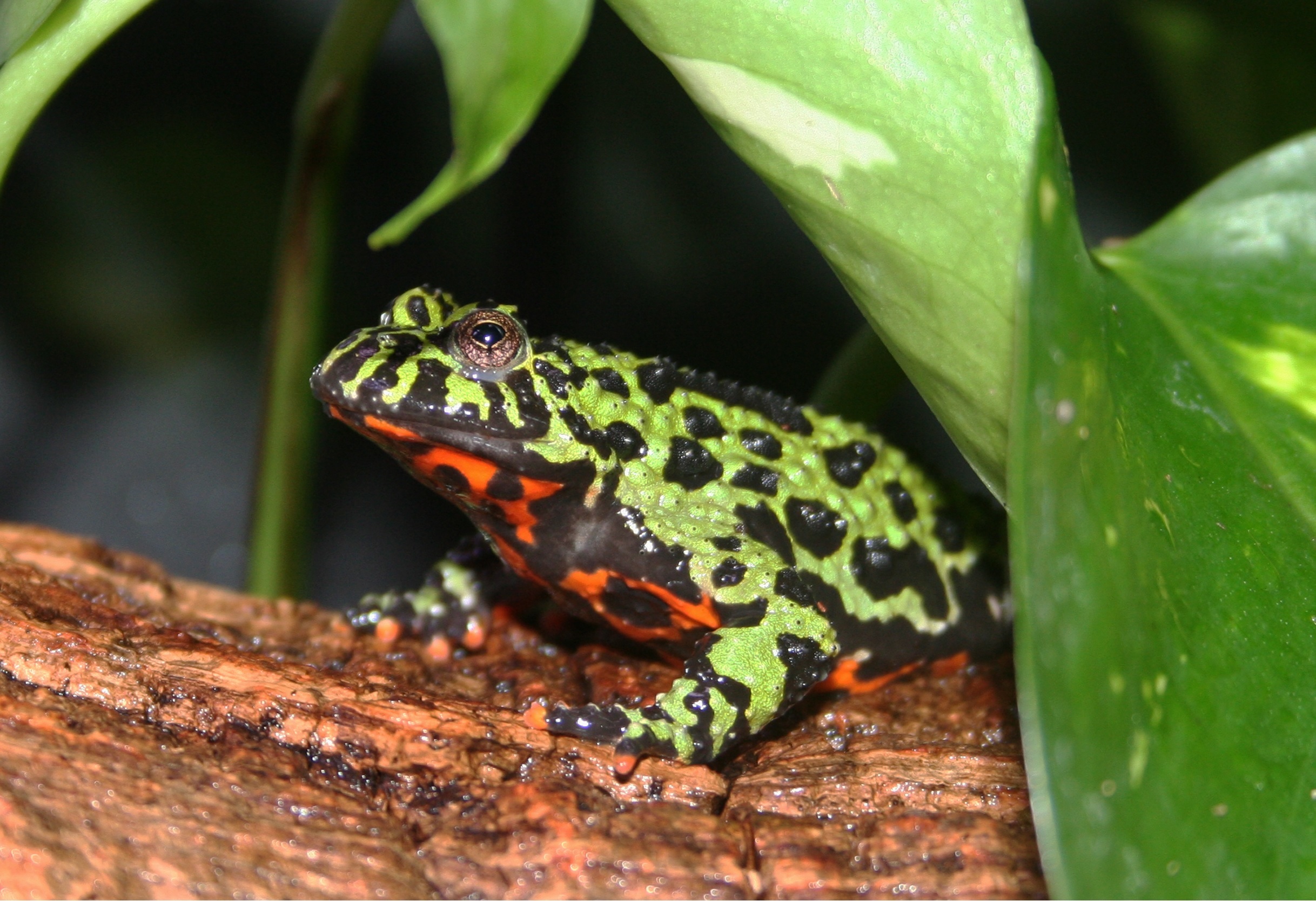|
Bombinatoridae
Bombinatoridae is a family (biology), family of toads found in Eurasia. Species of the family have flattened bodies and some are highly toxic. Taxonomy and systematics Fossil specimens of the genus ''Bombina'' are known from the Pliocene to the Pleistocene. The earliest fossil specimens are ''Eobarbourula'' from the Eocene of India, and ''Hatzegobatrachus'' from Late Cretaceous of Hateg island, Romania. The genus ''Barbourula'' was considered to be situated intermediate between ''Discoglossus'' and ''Bombina'', but closer to the latter, so was added to the Bombinatoridae when that family was split from the Discoglossidae. Genera Currently, there are two extant and at least two extinct genera recognised in the family Bombinatoridae: at the American Museum of Natural History's Amphibian Species of the World w ... [...More Info...] [...Related Items...] OR: [Wikipedia] [Google] [Baidu] |
Bombina Variegata
The yellow-bellied toad (''Bombina variegata'') belongs to the Order (biology), order Frog, Anura, the family Bombinatoridae, and the genus of fire-bellied toads. The toad is distributed mainly across western Europe as well as a handful of countries in eastern Europe. While the population of the toad is steadily decreasing over time, its numbers are not critical enough to be considered threatened or extinct. Conservation efforts in Germany are taking place to remedy the declining population before it is too late. The toad is characterized by its bright ‘yellow belly,’ and has a dark brown and green dorsal body. The toad displays crypsis to camouflage itself from predators. It also positions itself to display yellow coloration when facing a threat. The warts found on the dorsal side allow for the toad's toxins to be readily excreted when needed. The yellow-bellied toad is a fascinating species to study because of its breeding choices; it chooses calculated risk when deciding ... [...More Info...] [...Related Items...] OR: [Wikipedia] [Google] [Baidu] |
Discoglossidae
The Alytidae are a family (biology), family of primitive frogs. Their common name is painted frogs or midwife toads. Most are Endemism, endemic to Europe, but three species occur in northwest Africa, and a species formerly thought to be extinct is found in Israel. This family is also known as Discoglossidae, but the older name Alytidae has priority and is now recognized by major reference works. Some researchers, though, suggest that ''Alytes'' and ''Discoglossus'' are different enough to be treated as belonging to separate families, implying resurrection of the Discoglossidae. The term "discoglossid" has also been used to refer to many primitive fossil frogs that share plesiomorphic (ancestral) similities to alytids, but that are probably not closely related. Genera and species The family contains three Extant taxon, extant genera, ''Alytes'', ''Discoglossus'', and ''Latonia (frog), Latonia''. The first is somewhat toad-like and can often be found on land. The second is smoother ... [...More Info...] [...Related Items...] OR: [Wikipedia] [Google] [Baidu] |
Philippine Flat-headed Frog
''Barbourula busuangensis'' is a species of frog in the family Bombinatoridae. It is also known under the common names Philippine flat-headed frog, Palawan flat-headed frog, Busuanga jungle toad, Busuanga disk-tongued toad, and Philippine aquatic frog. It is endemic to the Busuanga, Culion, Balabac, and Palawan islands in the Philippines. It is an inhabitant of clear-water streams and is threatened by habitat loss. Description ''Barbourula busuangensis'' is a large aquatic species of frog. Its body is flattened dorso-ventrally and its nostrils and eyes are located at the top of its head. It has no external tympani. Both fore and hind limbs are robust and powerful, and the digits of the hands are webbed as well as those of the feet. The surface of the body is covered with fine tubercles. This frog is a dark greenish-black in colour with some faint pale green hatching and spotting on the hind limbs. Distribution and habitat This frog is endemic to the western Philippines where ... [...More Info...] [...Related Items...] OR: [Wikipedia] [Google] [Baidu] |
Hatzegobatrachus
''Hatzegobatrachus'' is an extinct genus of toad. It is sometimes considered the earliest known member of the family Bombinatoridae. It is known from the Late Cretaceous Densuş-Ciula Formation and Sard Formation of Romania, in the region that was once Hateg Island. See also * Prehistoric amphibian * List of prehistoric amphibians This list of prehistoric amphibians is an attempt to create a comprehensive listing of all genera from the fossil record that have ever been considered to be amphibians, excluding purely vernacular terms. The list includes all commonly accepted gen ... References Cretaceous amphibians of Europe Fossil taxa described in 2003 † Prehistoric amphibian genera {{Frog-stub ... [...More Info...] [...Related Items...] OR: [Wikipedia] [Google] [Baidu] |
Barbourula
''Barbourula'' is a genus of amphibian commonly referred to as jungle toads. They are small toads of the fire-bellied toad family, Bombinatoridae, found in the Philippines and Borneo Borneo () is the List of islands by area, third-largest island in the world, with an area of , and population of 23,053,723 (2020 national censuses). Situated at the geographic centre of Maritime Southeast Asia, it is one of the Greater Sunda .... Species References Amphibian Species of the World, ''Barbourula'' Amphibian genera [...More Info...] [...Related Items...] OR: [Wikipedia] [Google] [Baidu] |
Bombina Orientalis
The Oriental fire-bellied toad (''Bombina orientalis'') is a small semiaquatic frog species found in northeastern Asia, where they primarily dwell in slow-moving bodies of water and temperate forests. Quite common throughout much of their range, these frogs have mild toxins that can be excreted through their skin, with their vibrant underbellies Aposematism, serving as a warning of this. While not a true toad, their green and black skin is covered in small tubercles, giving them a toadlike appearance. Their sounds, mainly produced by males during the mating season, are very unlike those of other frogs. While their population is in decline, their numbers are still high overall, with the International Union for Conservation of Nature (IUCN) rating them as a least-concern species. They are commonly kept as pets in land and water vivarium, vivaria, as a relatively easy-to-care for species. They are also frequently used in scientific research, with their behavior, vocalizations, and le ... [...More Info...] [...Related Items...] OR: [Wikipedia] [Google] [Baidu] |
Toad
Toad (also known as a hoptoad) is a common name for certain frogs, especially of the family Bufonidae, that are characterized by dry, leathery skin, short legs, and large bumps covering the parotoid glands. In popular culture (folk taxonomy), toads are distinguished from frogs by their drier, rougher skin and association with more terrestrial habitats. However, this distinction does not align precisely with scientific taxonomy. List of toad families In scientific taxonomy, toads include the true toads (Bufonidae) and various other terrestrial or warty-skinned frogs. Non-bufonid "toads" can be found in the families: * Bombinatoridae ( fire-bellied toads and jungle toads) * Calyptocephalellidae ( helmeted water toad and false toads) * Discoglossidae ( midwife toads) * Myobatrachidae (Australian toadlets) * Pelobatidae ( European spadefoot toad) * Rhinophrynidae ( burrowing toads) * Scaphiopodidae ( American spadefoot toads) * Microhylidae ( narrowmouth toads) ... [...More Info...] [...Related Items...] OR: [Wikipedia] [Google] [Baidu] |
Bombina Pachypus
The Apennine yellow-bellied toad (''Bombina pachypus'') is a species of toad in the family Bombinatoridae endemic to Italy. Its natural habitats are temperate forests, temperate grassland, swamps, freshwater marshes, intermittent freshwater marshes, arable land, pastureland, ponds, open excavations, irrigated land, and seasonally flooded agricultural land. It is threatened by habitat loss. Description This species was once thought to be a subspecies of the yellow-bellied toad ''B. variegata''. It has a compact body and a rounded snout and the skin of the back is covered with tubercles. The pupil of the eye is triangular. The dorsal surface is dark tan or dark greyish-brown, often with washed-out, bright spots. The underparts, including the inner sides of the limbs, the fingers and toes, is greyish-blue to black-blue with striking, bright yellow to orange spots or patches, usually covering more than half of the underside. Distribution and habitat The Apennine yellow-bellied toad ... [...More Info...] [...Related Items...] OR: [Wikipedia] [Google] [Baidu] |
Eobarbourula
''Eobarbourula delfinoi'' is an extinct toad which existed in what is now Gujarat, India, during the Middle Ypresian age of the early Eocene. It was described by Annelise Folie, Rajendra S. Rana, Kenneth D. Rose, Ashok Sahni, Kishor Kumar, Lachham Singh and Thierry Smith in 2012, and is the only species in the genus ''Eobarbourula''. The name of the genus is a combination of "Eo", referring to the epoch in which the animal existed, and ''Barbourula'', the generic name of the jungle toads, while the specific epithet refers to Massimo Delfino, an Italian Italian(s) may refer to: * Anything of, from, or related to the people of Italy over the centuries ** Italians, a Romance ethnic group related to or simply a citizen of the Italian Republic or Italian Kingdom ** Italian language, a Romance languag ... paleontologist. References Bombinatoridae Eocene amphibians Fossil taxa described in 2012 Prehistoric amphibians of Asia Prehistoric amphibian genera {{paleo-anura-st ... [...More Info...] [...Related Items...] OR: [Wikipedia] [Google] [Baidu] |
Bombina Maxima
''Bombina maxima'', commonly known as the Yunnan firebelly toad or large-webbed bell toad, is a species of toad in the family Bombinatoridae found in Yunnan Yunnan; is an inland Provinces of China, province in Southwestern China. The province spans approximately and has a population of 47.2 million (as of 2020). The capital of the province is Kunming. The province borders the Chinese provinces ..., China and likely to Myanmar. Its natural habitats include swamps, springs, marshes, arable land, canals, and ditches. Although easy to care for, handling a large-webbed toad should be kept to a minimum because their skin secretes a toxin that can cause irritation. This toxin is rich in active proteins and antimicrobial peptides that are essential in maintaining its innate immunity and protecting it from predators that come in contact with its skin. This antimicrobial peptide rich skin is used for local medicine. References maxima Amphibians described in 1905 Amphibian ... [...More Info...] [...Related Items...] OR: [Wikipedia] [Google] [Baidu] |
Bombina Microdeladigitora
''Bombina microdeladigitora'' is a species of toad in the family Bombinatoridae endemic to Guangxi, Hubei and Sichuan in China. It is commonly known by several names including Guangxi firebelly toad, Hubei firebelly toad, large-spined bell toad, Lichuan bell toad, small-webbed bell toad, and Yunnan firebelly toad. Its natural habitats are subtropical or tropical moist montane forests, temperate forests, rivers, swamps, and freshwater marshes. It is threatened by habitat loss Habitat destruction (also termed habitat loss or habitat reduction) occurs when a natural habitat is no longer able to support its native species. The organisms once living there have either moved elsewhere, or are dead, leading to a decrease .... References Bombina Amphibians described in 1978 Taxonomy articles created by Polbot {{Anura-stub ... [...More Info...] [...Related Items...] OR: [Wikipedia] [Google] [Baidu] |




